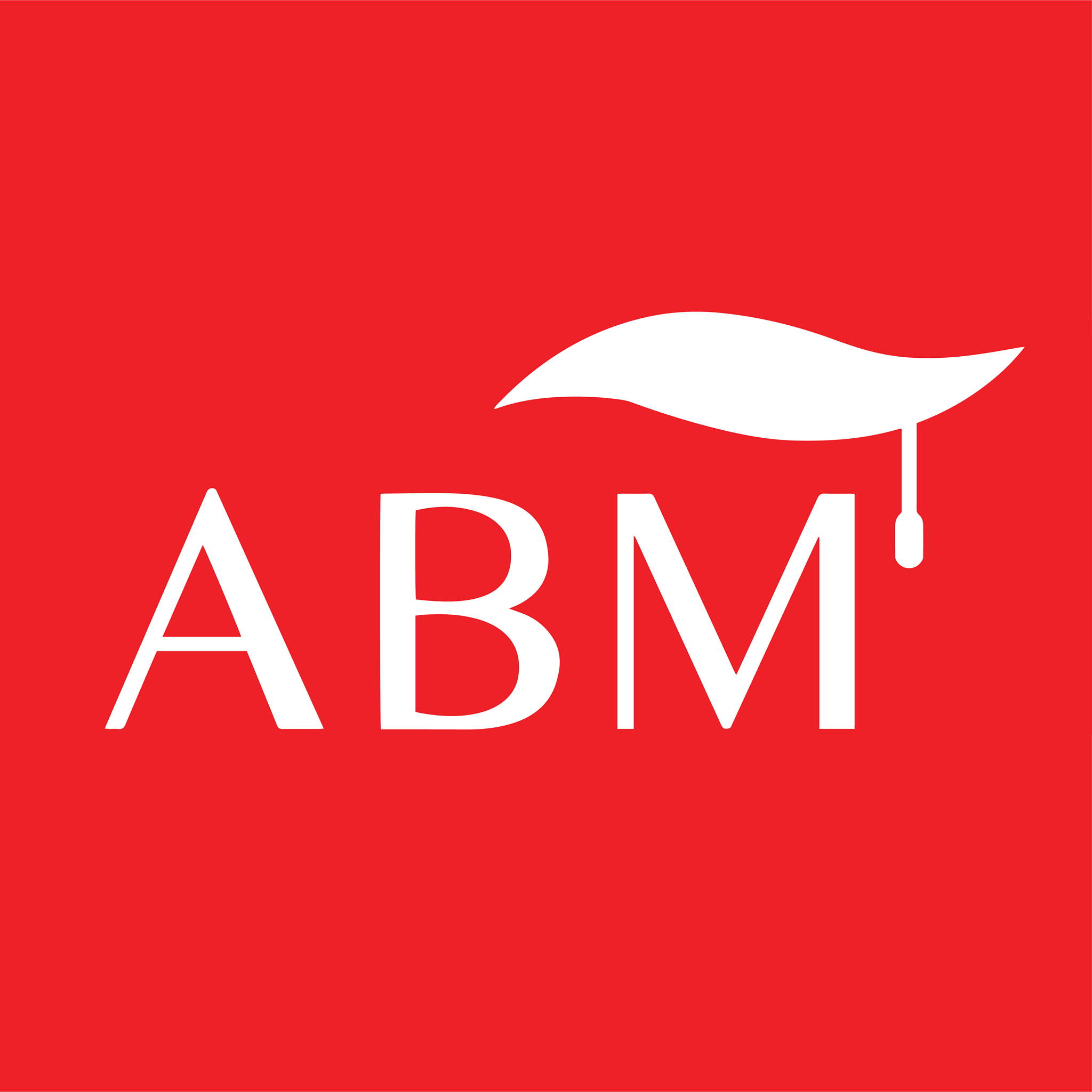Students will gain a thorough understanding of fundamental graphic design principles, and how to design digitally using Adobe Creative Suite (including PhotoShop, InDesign, Illustrator and more) to create their own portfolios to present to potential employers. Students finish off with a 4-week pract

Students will gain a thorough understanding of fundamental graphic design principles, and how to design digitally using Adobe Creative Suite (including PhotoShop, InDesign, Illustrator and more) to create their own portfolios to present to potential employers. Students finish off with a 4-week practicum placement at the end of the course to add work experience to their resume.
The Graphic Design Diploma Program at ABM College allows students an opportunity to explore their creative and visual communication skills in a digital world.
Creativity Lives Here
Students build on their creativity to bring projects to life using industry-standard software
Interactive Learning
Relaxed learning environment for students to easily understand course material
Turn Skills Into a Career
Students turn their skills and knowledge into a portfolio they can use to get a job quickly
Graphic Design Diploma Highlights
The ABM College Graphic Design Diploma Program teaches students how to professionally design for a broad range of applications and career opportunities. Students receive extensive training on industry-standard design software, combining the latest digital techniques with standard art principles to provide the essential knowledge and skills required to begin designing and building professional graphics.
Key Characteristic
Career Opportunities
Course Curriculum
Fundamentals of Graphic Design
This course introduces students to the fundamentals of graphic design and its application for print and web. Students discover that design is a complex process that involves research and analysis, concept development, evaluation, refinement, and execution.
Introduction to Visual Design/Fundamentals of Composition and Layout
Layout and composition are the building blocks of graphic design. The goal of this module is to give students skills that will allow them to work with visual contrasts, cropping, hierarchy, and direction in single images and complex compositions.
Shape and Color Theory
Students learn about visual contrast, colour, rhythm, and pattern in design. They also learn the process involved in making an abstract design from shapes, and how to use that element to create a repeating pattern design. Students explore the various aspects of colour and identify many ways of integrating colour for effective design layouts.
Fundamentals of Typography
This course teaches students about typography and its significance within graphic design in the development of type. Students learn about the terms and measurements that form the basis of typographic vocabulary, and deconstruct fonts to show the working components.
Adobe Illustrator
Students create and design scalable computer graphics with Adobe illustrator including core drawing and shape tools, transformation and reshaping features, text manipulation, and the pen tool. The module prepares the students to create simple vector graphics, educate them about best practices to enhance workflow, and train them on how to integrate and manipulate colour and type in designs and to prepare documents for output to print, web, and video.
Adobe Photoshop 1
Students examine the essential capabilities and creative applications of Adobe Photoshop CC, from correcting colour and print to retouching portraits, navigation, resolution, cropping, selecting, printing, and making web graphics.
Adobe Photoshop Advanced
As a continuation of Adobe Photoshop 1, this module covers advanced compositing techniques, including painting with the mixer brush, adding a background, matching colour schemes across images, and blending multiple pictures to create a panorama. Students also learn how to apply layer styles, use layer effects, add adjustment layers, and various blending modes.
Adobe InDesign
Students discover the essential capabilities and creative application of InDesign. Students will create a series of projects using different available tools and techniques including single and multiple pages, drop-down menus and panels, column set up, selection tools, layers, colour from different libraries, paragraph and character styles, picture frames, text wraps around images, links and more.
Adobe Premiere Pro / Digital Darkroom
Students explore the fundamentals of working with digital images acquired from capture, with a focus on the image optimization process within Adobe Photoshop CC. Students learn how to produce a high-quality image that can be reproduced for multiple purposes. The objective of this module is to prepare students to effectively process camera RAW files with Photoshop CC RAW processing interface, process jpg files using a non-destructive workflow, work with the appropriate file format depending on content and usage, maximize the tonal range and correct a colour cast in a digital image, work with layers, layer blending modes and layer styles, perform non-destructive image retouching, crop, rotate, and resize images to meet specific requirements, and export files for both web use and print production.
Introduction to Drawing
This module introduces the student to the basic principles of drawing. Students learn basic knowledge in drawing, fundamental concepts and techniques, and practice their drawing using charcoal, pencil and conte.
Introduction to Photography
This course is an introduction to photography from a graphic design perspective. Students will learn how to capture still image, video and sound for various environments, including print and online.
Graphic Design and Business
This module aims to educate students on why designers do more than simply design things, and how graphic design and business are very much integrated disciplines.
Portfolio
Students learn how to create a good portfolio that effectively showcases their work and abilities. Students can then use this portfolio to present to potential employers.
ABM College commits to adapting reasonable procedures to ensure students have the opportunity to successfully complete their studies. The college maintains a professional setting by assuring a safe, respectable, and fair environment for all students and staff members.
Students and staff are required to support the academic and ethical standards of ABM College. Violations of the policies and standards may be subjected to suspension and/or expulsion under the conditions of inadequate performance and unacceptable actions.
Student Attendance and Academic Policy:
Punctual and regular attendance in class is mandatory to ensure an optimal learning environment at ABM College. Classes are intended to be interactive and participative.
If there are any extenuating circumstances concerning a student’s absence, the instructor or office staff should be notified as soon as possible.
It is the student’s responsibility to review the course material prior to class to develop an understanding of the background knowledge with our course curriculum. Students will be accountable for learning any missed material due to absence.
Students are expected to complete assignments in the time allowed by instructors. Assignments are to be completed individually. There is a zero tolerance policy at ABM College regarding plagiarism and academic dishonesty. Academic dishonesty or plagiarism will result in an automatic zero in the assignment or exam.
Daily attendance is taken by instructors. Student absences are taken seriously at ABM College. Absences lasting for more than two consecutive days must be accompanied by a valid reason with the proper documentation. A reasonable excuse for an absence must describe circumstances requiring the student’s absence (e.g. medical, family emergency, etc.). The inability to provide a valid reason or documentation may result in expulsion from the college. ABM College will seek to be consistent and reasonable in its approach to determine the parameters of a valid reason for any absences.
Section 6(c) of the Alberta Institution Designation Agreement (AIDA) states educational institutions are required to consider a student with student loans as withdrawn if they have not attended class for five consecutive days without an excused absence. The school must consider the student as withdrawn (for the purpose of student funding) and notify AET of the withdrawal. The effective date of the student’s withdrawal is the first of the five days that the student was absent.
The institute may continue to allow withdrawn students to remain in their program, but the students will no longer be eligible for student funding.

In this three-day course, you’ll get an excellent overview of how to convert your work into Adobe Portable Document Format (PDF) using Adobe Acrobat.

Adobe Illustrator CC is an essential design tool for anyone who needs to express ideas visually in print, on the web, and in any other medium.

Adobe Illustrator CC is an essential design tool for anyone who needs to express ideas visually in print, on the web, and in any other medium.

This 3-day course provides a thorough overview of the interface, the tools, the features, tricks, and tips for using Photoshop CC.

This 2-day course provides a thorough overview for experienced users who wish to further their effectiveness on Photoshop CC.
© 2025 coursetakers.com All Rights Reserved. Terms and Conditions of use | Privacy Policy